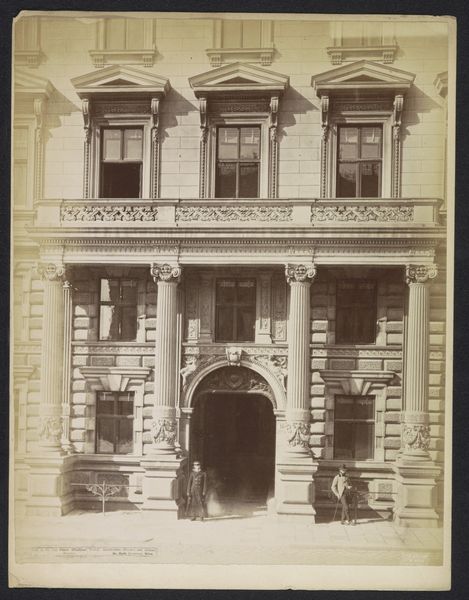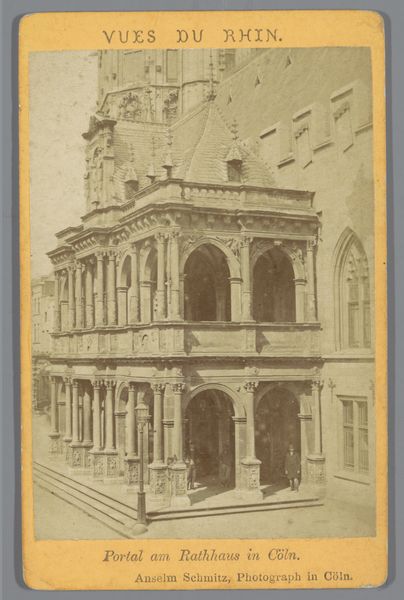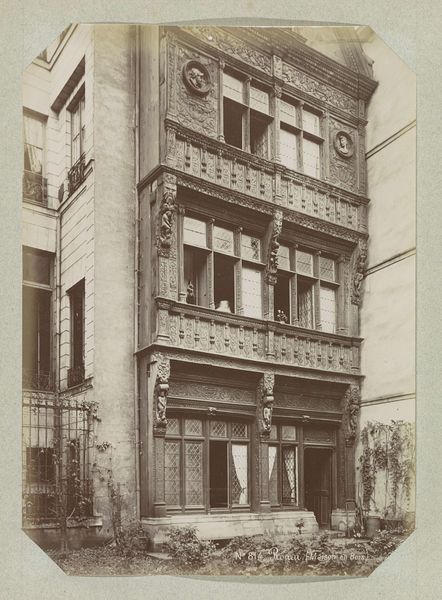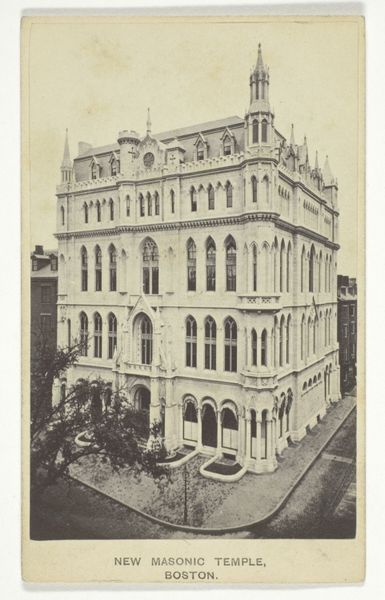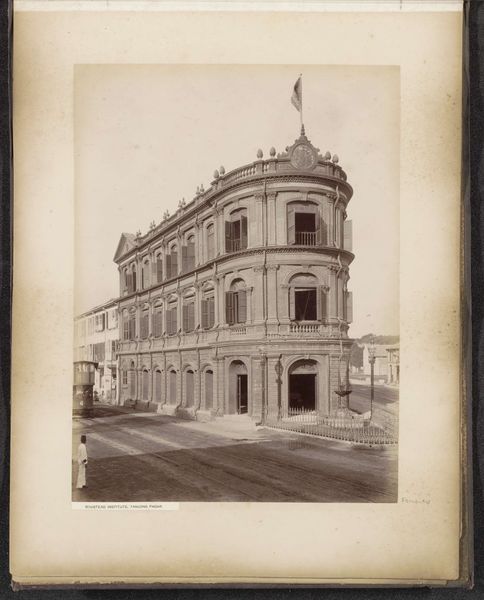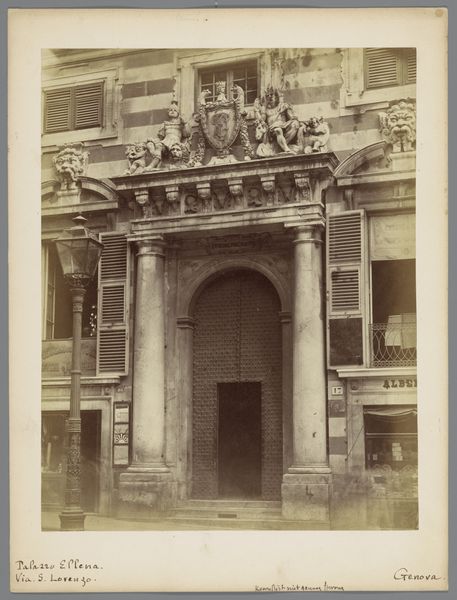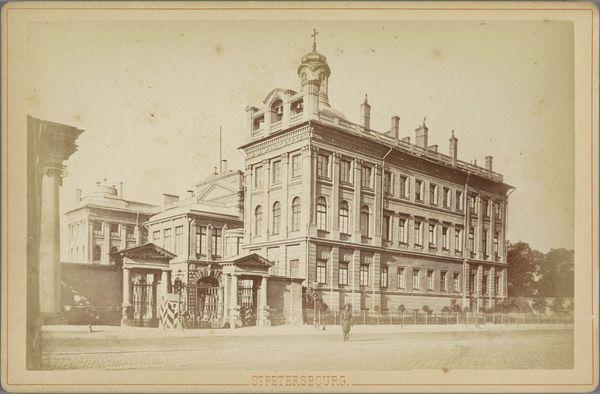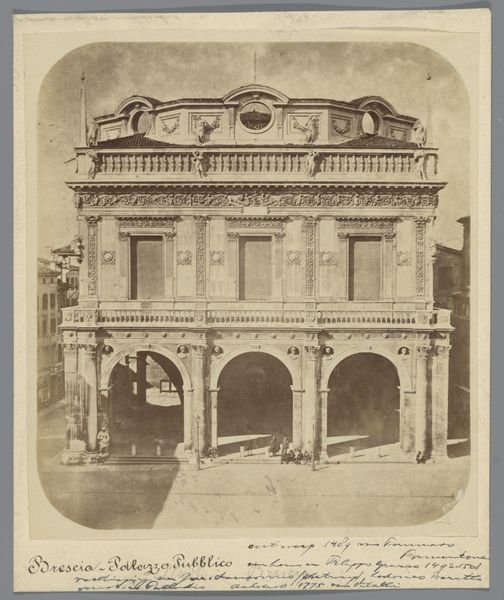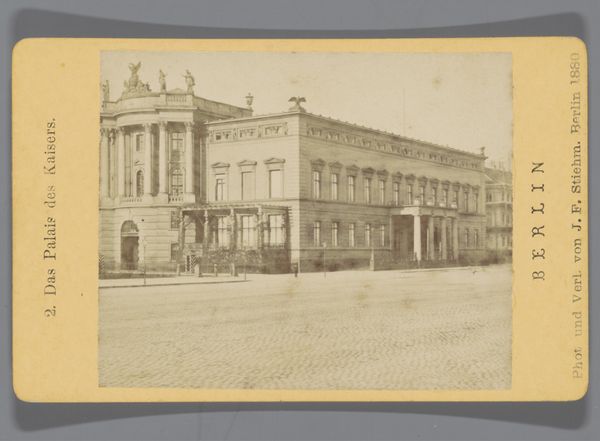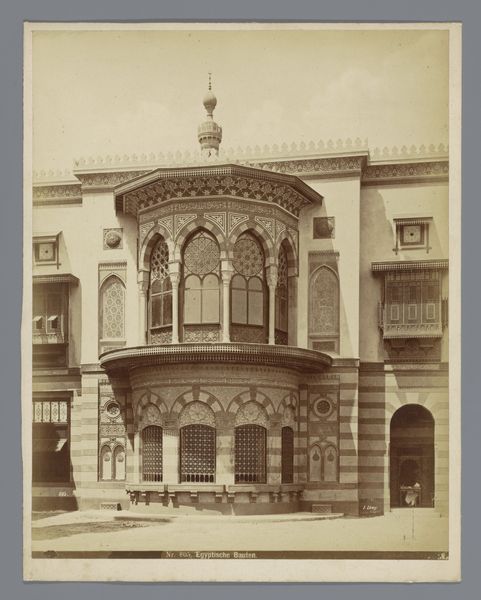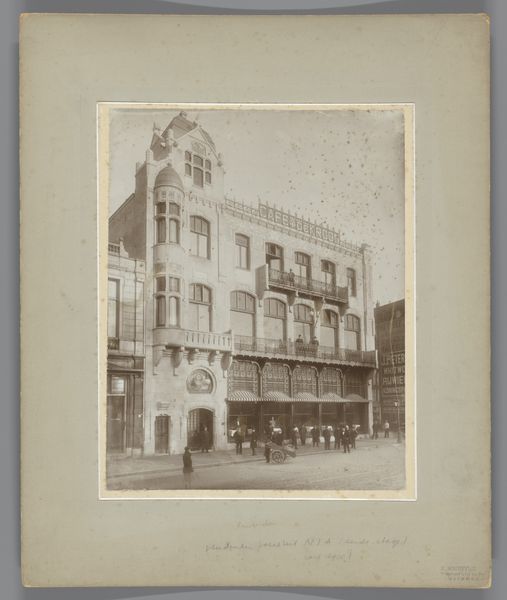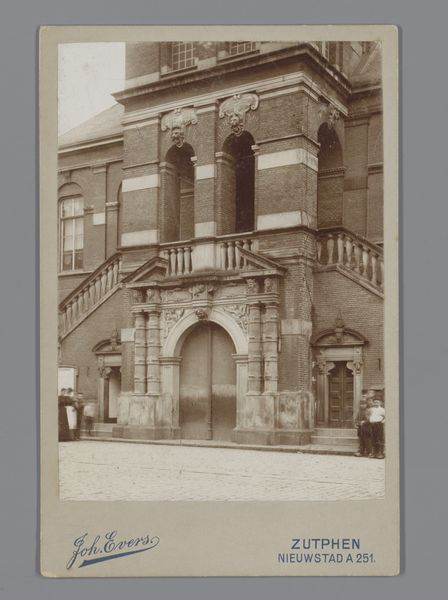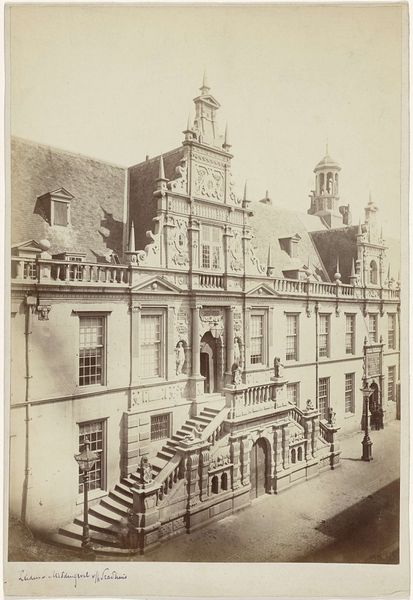
photography, albumen-print
#
portrait
#
landscape
#
photography
#
cityscape
#
albumen-print
#
realism
Dimensions: height 140 mm, width 100 mm, height 302 mm, width 250 mm
Copyright: Rijks Museum: Open Domain
Curator: The Rijksmuseum is delighted to present this albumen print, "Voorgevel van de pastorie in Kloetinge," created in 1888 by Henry Pauw van Wieldrecht. It is an excellent example of realism in landscape photography from the late 19th century. Editor: Immediately, I notice this sepia tone lends a serious, almost somber, mood. The symmetry of the building itself is quite imposing. The stark facade looms over what I assume is a group of townspeople or, perhaps more likely, children affiliated with the parsonage. Curator: Indeed. Let’s consider the historical backdrop. The late 19th century in the Netherlands was a period of intense social stratification and religious influence, particularly in rural communities like Kloetinge. Photography at this time, while becoming more accessible, still carried connotations of authority and documentation. Editor: And I’d wager that this church was the center of that authority in the area. Those long, gothic-like windows evoke the sense of a sacred space, and the architectural details are embellished with subtle iconography—garlands above the windows. I wonder about their meaning. Could they represent hospitality or perhaps a symbolic connection to the earth and prosperity? Curator: It is also key to note the arrangement of the figures at the front—likely orphans. Their positioning creates a fascinating dynamic, both reinforcing the paternalistic role of the church within the community and potentially highlighting a power imbalance, don't you think? What do the closed dark curtains signify? Could that be symbolic of the repression in religious spaces? Editor: That's a particularly sharp observation! And it’s quite compelling if we view the children beneath them as almost symbolically entrapped. Visually, though, the dark windows create a stark contrast with the brightly lit facade. The verticality established is quite dramatic and could signal aspiration towards the heavens— a powerful symbolic anchor in the lives of believers at the time. Curator: I do agree. Thinking of intersectional politics, the limited access to resources outside these establishments made individuals, particularly orphans and women, especially dependent. Editor: Considering that context only enriches my interpretation. The building’s facade isn't simply stone and mortar but a loaded cultural symbol that reflects deeper beliefs. Curator: Indeed, Henry Pauw van Wieldrecht has successfully used this building to illustrate the sociopolitical climate in this region of the Netherlands in 1888. Editor: This glimpse into 19th-century Kloetinge reminds us that architecture and iconography offer rich, interwoven texts to explore. Thank you.
Comments
No comments
Be the first to comment and join the conversation on the ultimate creative platform.
